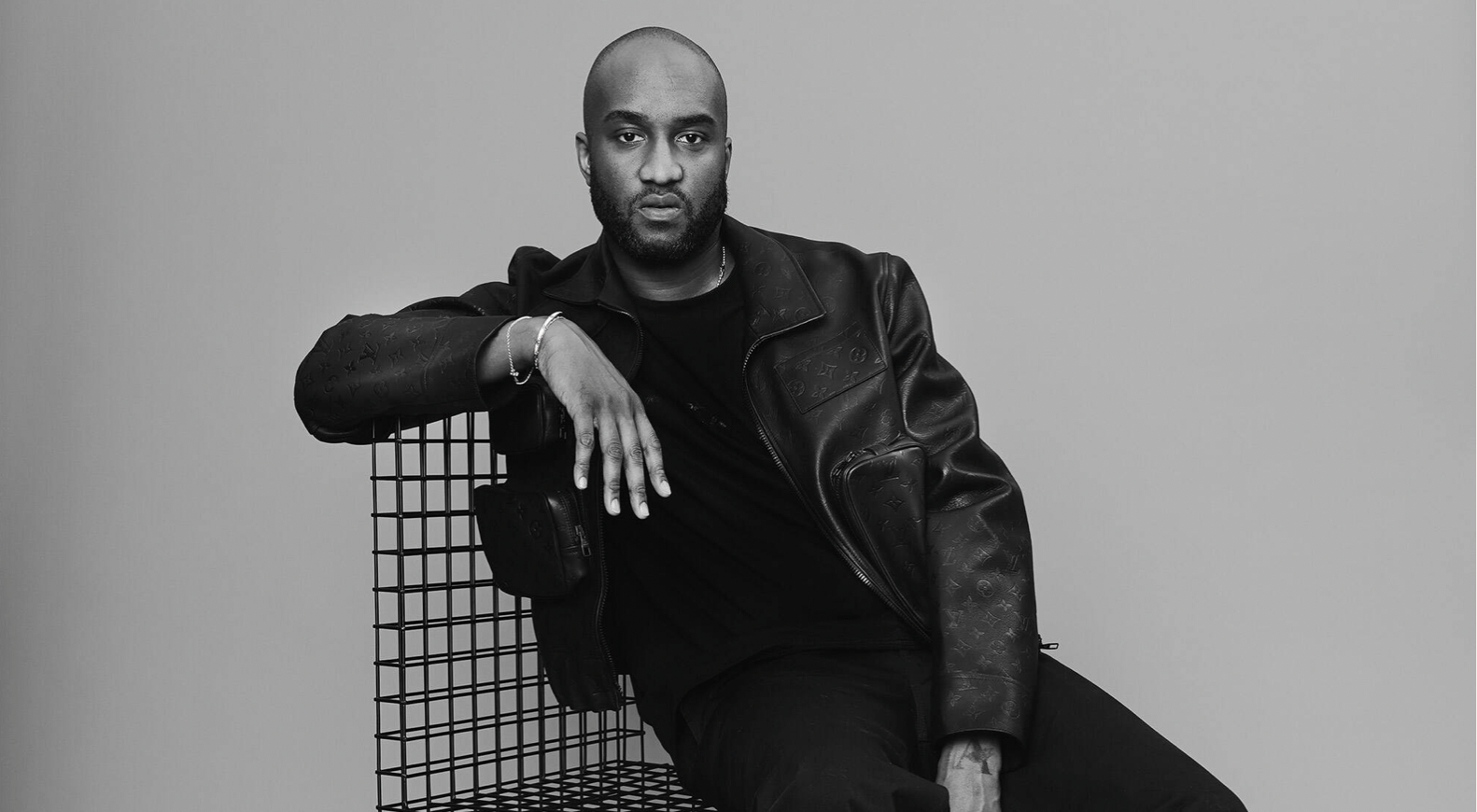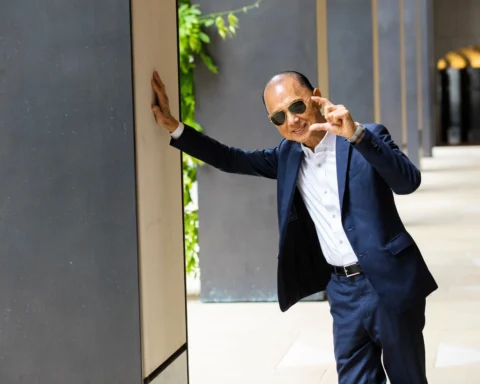In the kaleidoscopic realm of fashion, few names shimmer with the incandescent brilliance of Virgil Abloh. A polymath whose influence transcended the sartorial sphere, Abloh redefined the paradigms of haute couture with an oeuvre that amalgamated streetwear sensibilities with high fashion’s rarefied aesthetics. His journey through the labyrinth of creativity, punctuated by groundbreaking collaborations and avant-garde designs, heralded a new epoch in fashion—a testament to his visionary prowess and relentless innovation.
The Genesis of a Visionary
Virgil Abloh was born on September 30, 1980, in Rockford, Illinois, to Ghanaian immigrant parents. His early life, infused with a blend of African heritage and Midwestern ethos, laid the foundation for his eclectic aesthetic. Abloh’s academic pursuits were as multifaceted as his later designs; he earned a degree in civil engineering from the University of Wisconsin-Madison before securing a master’s degree in architecture from the Illinois Institute of Technology. This academic confluence of structural rigor and creative fluidity would become a hallmark of his design philosophy.
Virgil Abloh’s upbringing was instrumental in shaping his worldview and aesthetic sensibilities. Growing up in Rockford, a city with a modest population and a predominantly working-class demographic, Abloh was exposed to the gritty realities of urban life while also experiencing the richness of his Ghanaian heritage. This duality of experience became a cornerstone of his creative identity. His mother, a seamstress, introduced him to the world of fashion, while his father managed a paint company, instilling in him a robust work ethic.
From a young age, Abloh exhibited an insatiable curiosity and a propensity for artistic experimentation. His early forays into creative expression included designing T-shirts and DJing, both of which would become significant facets of his later career. This period of his life was characterized by a relentless pursuit of knowledge and skill acquisition, laying the groundwork for his future endeavors.
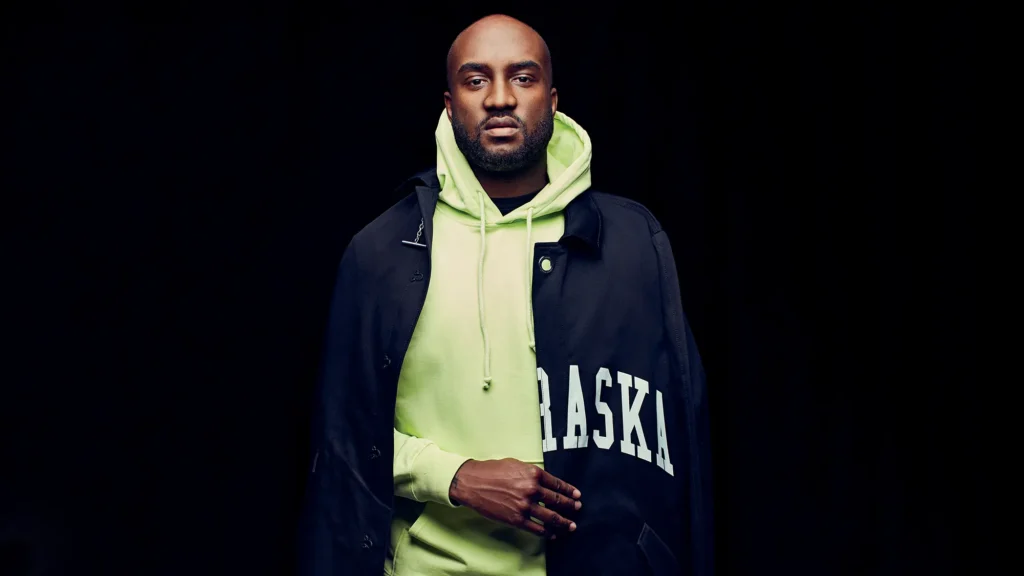
Streetwear Alchemy: Pyrex Vision and Off-White
Abloh’s initial foray into the fashion industry came through his collaboration with Kanye West. Serving as West’s creative director, Abloh honed his ability to synthesize disparate cultural elements into a cohesive narrative. His tenure with West was marked by an exploration of the intersections between fashion, music, and art, culminating in several high-profile projects that garnered critical acclaim.
In 2012, Abloh launched Pyrex Vision, a brand that recontextualized athletic wear with high fashion’s imprimatur. Pyrex Vision was a crucible in which Abloh’s alchemical prowess was first displayed, transforming mundane Ralph Lauren flannels into coveted artifacts. The brand’s aesthetic was a raw, unfiltered reflection of street culture, infused with a sense of rebellious energy and DIY ethos.
However, it was Off-White, founded in 2013, that cemented Abloh’s status as a fashion savant. Off-White’s aesthetic was a palimpsest of urban culture, modern art, and deconstructed luxury. The brand’s signature motifs—diagonal stripes, industrial belts, and quotation marks—became visual vernaculars that resonated with a global audience. Abloh’s ability to distill complex ideas into accessible yet profound symbols underscored his role as a modern-day semiotician.
Off-White’s rise to prominence was meteoric, propelled by Abloh’s strategic use of social media and his innate understanding of youth culture. The brand’s collaborations with giants like Nike, IKEA, and Levi’s further solidified its status in the fashion pantheon. Each collaboration was a masterclass in brand synergy, seamlessly blending Off-White’s streetwear ethos with the partner brand’s heritage and identity.

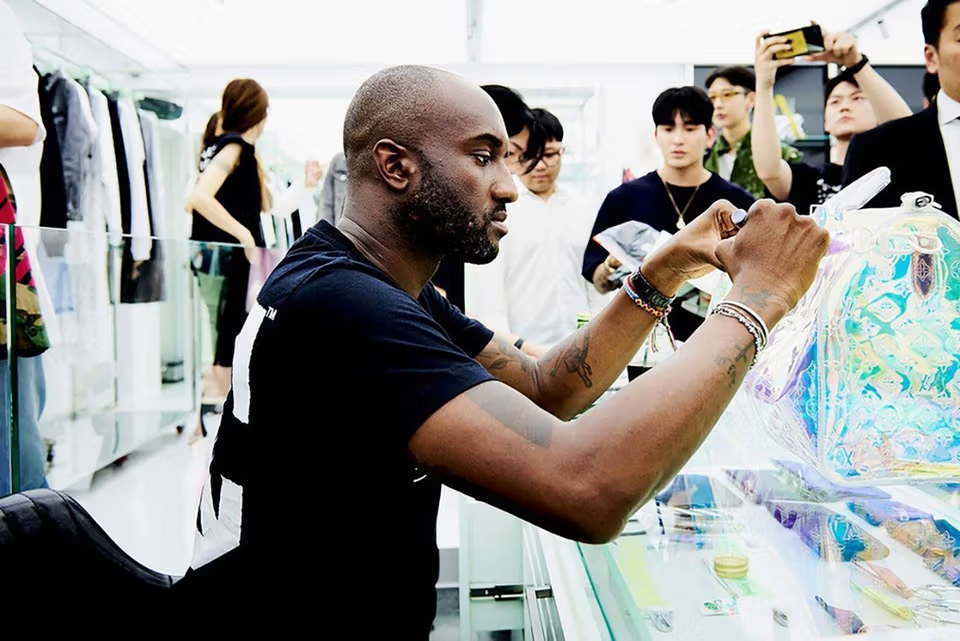

The Hermès of Our Time: Louis Vuitton and Beyond
In March 2018, Abloh’s appointment as the artistic director of Louis Vuitton’s menswear division marked a watershed moment in fashion history. He was the first African-American to helm the iconic French maison, a milestone that reverberated beyond the fashion industry. Abloh’s debut collection for Louis Vuitton, showcased in the verdant environs of the Palais Royal, was a chromatic symphony that celebrated diversity and inclusion. Models of varied ethnic backgrounds traversed a rainbow-hued runway, embodying Abloh’s vision of a harmonious multicultural tapestry.
Abloh’s tenure at Louis Vuitton was characterized by a seamless blend of heritage and innovation. He infused the storied house with contemporary verve, introducing elements like holographic fabrics, iridescent monograms, and utilitarian silhouettes. His collaborations with artists such as Takashi Murakami and Nigo further enriched Louis Vuitton’s lexicon, establishing a dialogue between the brand’s legacy and the zeitgeist.
One of Abloh’s most significant contributions to Louis Vuitton was his ability to reinterpret the brand’s iconic monogram in a manner that was both reverent and revolutionary. By incorporating elements of streetwear and contemporary art, he breathed new life into the monogram, making it relevant to a younger, more diverse audience. This approach was exemplified in his use of translucent materials, bold colors, and unconventional patterns, which transformed the traditional motifs into modern-day symbols of luxury.
Abloh’s influence extended beyond the runway to Louis Vuitton’s retail and marketing strategies. He championed the use of immersive installations and experiential events, creating environments that engaged customers on a sensory level. His pop-up stores, designed in collaboration with artists and designers, blurred the lines between retail and art, offering a unique and memorable shopping experience.

A Polyphonic Designer: Collaborations and Cross-Disciplinary Ventures
Abloh’s creative ventures were not confined to fashion. His polymathic inclinations led him to collaborate with entities across various domains. The Off-White x Nike “The Ten” collection redefined sneaker culture, merging performance engineering with high fashion’s conceptual rigor. Each shoe in the collection was a deconstruction of a classic silhouette, exposing its inner workings and reimagining its form. This approach resonated deeply with sneaker enthusiasts and fashion aficionados alike, solidifying Abloh’s reputation as a boundary-pushing designer.
Abloh’s collaboration with IKEA democratized design, bringing his aesthetic to a broader audience through functional yet stylish homeware. The “MARKERAD” collection featured minimalist furniture and decor items adorned with Off-White’s signature motifs. By making high-concept design accessible to the masses, Abloh challenged the notion that luxury and affordability are mutually exclusive.
In the realm of music, Abloh’s influence was equally profound. As a DJ and producer, he imbued his sets with an eclectic mix of genres, mirroring his approach to fashion. His album covers for artists like Kanye West and Lil Uzi Vert were visual extensions of his sartorial ethos, blending surrealism with street culture. Abloh’s collaborations with musicians extended to stage design and merchandise, further blurring the boundaries between fashion and music.
Abloh’s work in the art world was marked by his collaborations with contemporary artists such as Takashi Murakami and Jenny Holzer. These partnerships resulted in a series of limited-edition pieces that explored themes of consumerism, identity, and cultural appropriation. Abloh’s ability to seamlessly integrate fashion, art, and social commentary was a testament to his multidisciplinary prowess.

Philosophia of Fashion: Abloh’s Intellectual Tenets
At the core of Abloh’s work was a profound philosophical inquiry into the nature of fashion and its role in society. He viewed clothing as a medium for storytelling, a canvas upon which cultural narratives could be inscribed. Abloh’s designs were often laden with subtext and intertextual references, inviting viewers to engage in a deeper dialogue with the garments.
His use of quotation marks, for instance, was a form of meta-commentary, a way of questioning the authenticity and authorship in fashion. By placing everyday terms like “Sculpture” or “Shoelaces” in quotes, Abloh prompted a reevaluation of their meanings and connotations. This semiotic playfulness was emblematic of his approach to design—provocative, thoughtful, and inherently subversive.
Abloh’s fascination with deconstruction and recontextualization was deeply influenced by his architectural background. He approached fashion with the precision and analytical rigor of an architect, dissecting garments to their core components and reconstructing them in novel ways. This method allowed him to explore the boundaries of form and function, creating pieces that were both aesthetically striking and intellectually engaging.
In his quest to democratize fashion, Abloh was a vocal advocate for diversity and inclusion within the industry. He used his platform to amplify marginalized voices and challenge the status quo. His commitment to these principles was evident in his casting choices, collaborative projects, and public statements. Abloh’s vision of fashion was inherently inclusive, a reflection of his belief that creativity knows no boundaries.

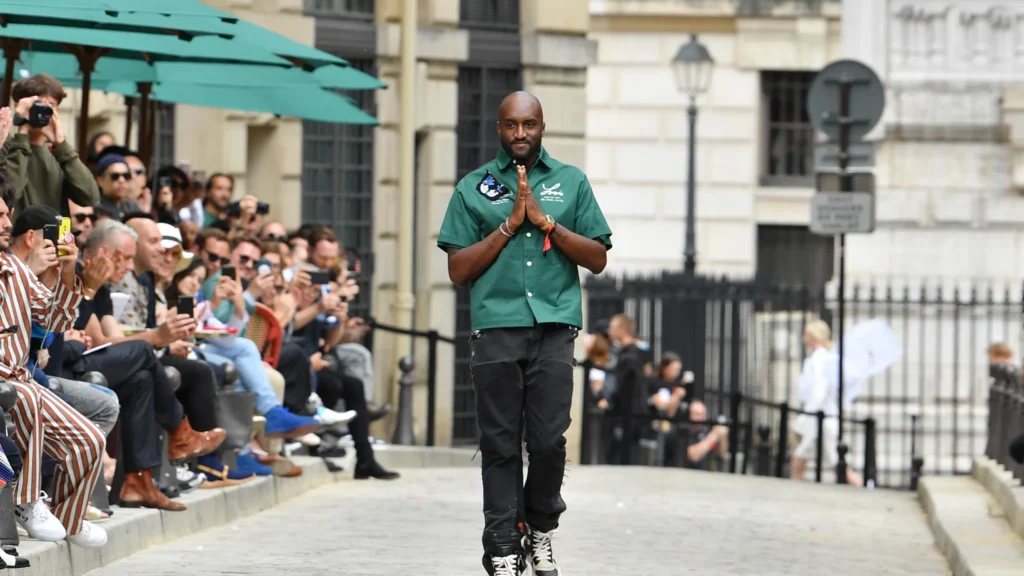
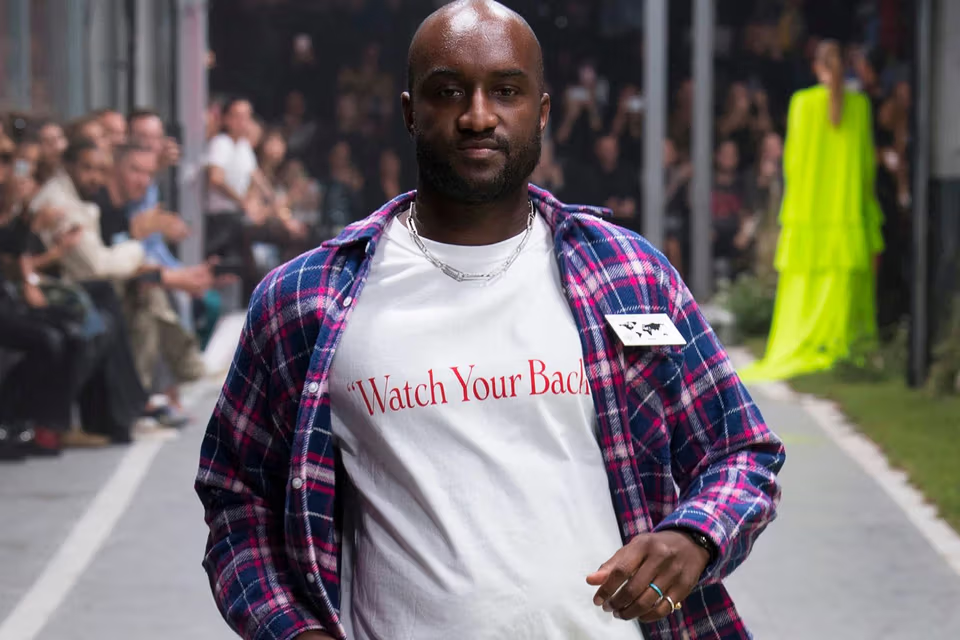
The Architectural Mindset: Foundations in Civil Engineering and Architecture
Virgil Abloh’s academic journey was as unconventional as his design approach. Initially trained as a civil engineer, Abloh’s transition to architecture marked a pivotal moment in his career. His studies at the Illinois Institute of Technology (IIT) under the tutelage of renowned architect Peter Landon provided him with a robust foundation in structural design and spatial dynamics. This architectural mindset permeated his work in fashion, where he approached garments with the precision and analytical rigor of an architect.
At IIT, Abloh was exposed to the works of modernist architect Ludwig Mies van der Rohe, whose minimalist principles and emphasis on functionalism resonated deeply with him. This influence was evident in Abloh’s later work, where he often employed a reductive approach, stripping designs to their essential elements and reconstructing them in innovative ways. His architectural background endowed him with a unique perspective, enabling him to view fashion through a lens of spatiality and structure.

Pyrex Vision: The Genesis of a Cultural Phenomenon
Pyrex Vision, Abloh’s first independent venture, was more than a fashion brand; it was a cultural statement. Launched in 2012, the brand recontextualized pre-existing garments, primarily sourced from Ralph Lauren, and emblazoned them with bold graphics and the word “Pyrex.” This act of appropriation and transformation was a commentary on consumer culture and the value assigned to branded items.
The Pyrex Vision collection, consisting of oversized flannel shirts, basketball shorts, and hoodies, became an instant hit among streetwear enthusiasts. Abloh’s ability to infuse everyday items with a sense of exclusivity and desirability was a testament to his understanding of cultural zeitgeist. The brand’s success laid the groundwork for Off-White, where Abloh would further refine his vision and expand his creative repertoire.
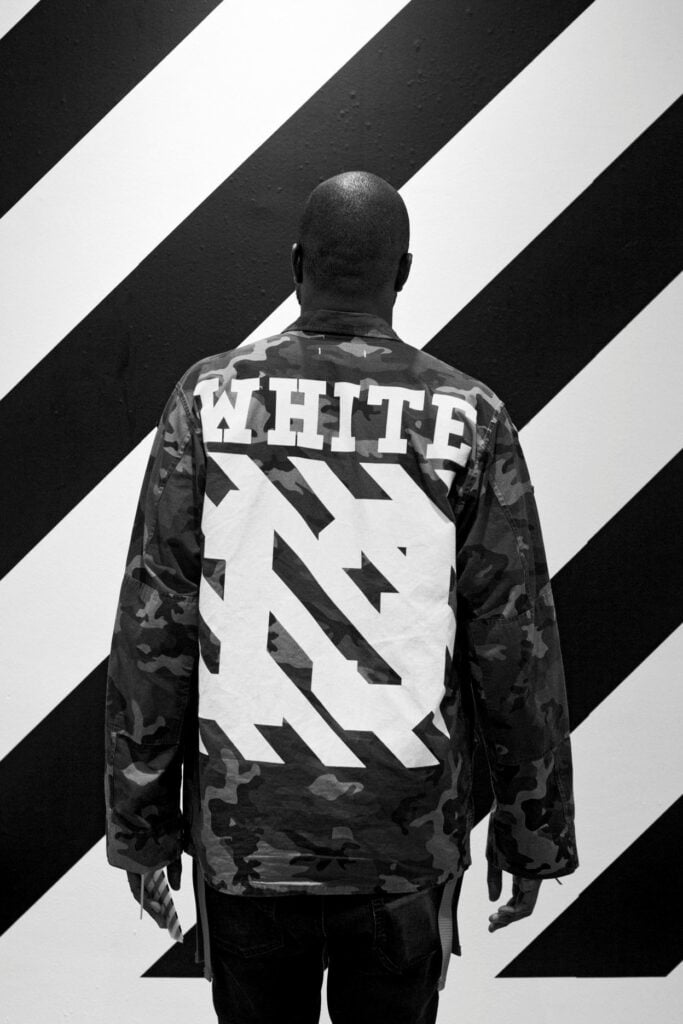
Off-White: The Confluence of Art and Fashion
Off-White, founded in 2013, was the embodiment of Abloh’s design philosophy—a synthesis of high fashion, streetwear, and contemporary art. The brand’s name itself was a reflection of its conceptual underpinning, existing in the liminal space between black and white, traditional and modern, high and low. This dichotomy was central to Off-White’s identity, challenging conventional notions of luxury and accessibility.
The brand’s visual language was instantly recognizable, characterized by its use of quotation marks, industrial belts, and diagonal stripes. These elements became iconic, symbolizing Off-White’s disruptive approach to fashion. Abloh’s designs often featured ironic commentary, such as labeling ordinary objects with their literal descriptions in quotation marks, blurring the line between fashion and art.
Off-White’s impact on the fashion industry was profound, influencing a new generation of designers and consumers. Abloh’s ability to merge street culture with high fashion resonated with a diverse audience, breaking down barriers and democratizing luxury. The brand’s collaborations with industry giants such as Nike, Levi’s, and Moncler further cemented its status as a cultural powerhouse, each partnership a testament to Abloh’s visionary approach and collaborative spirit.

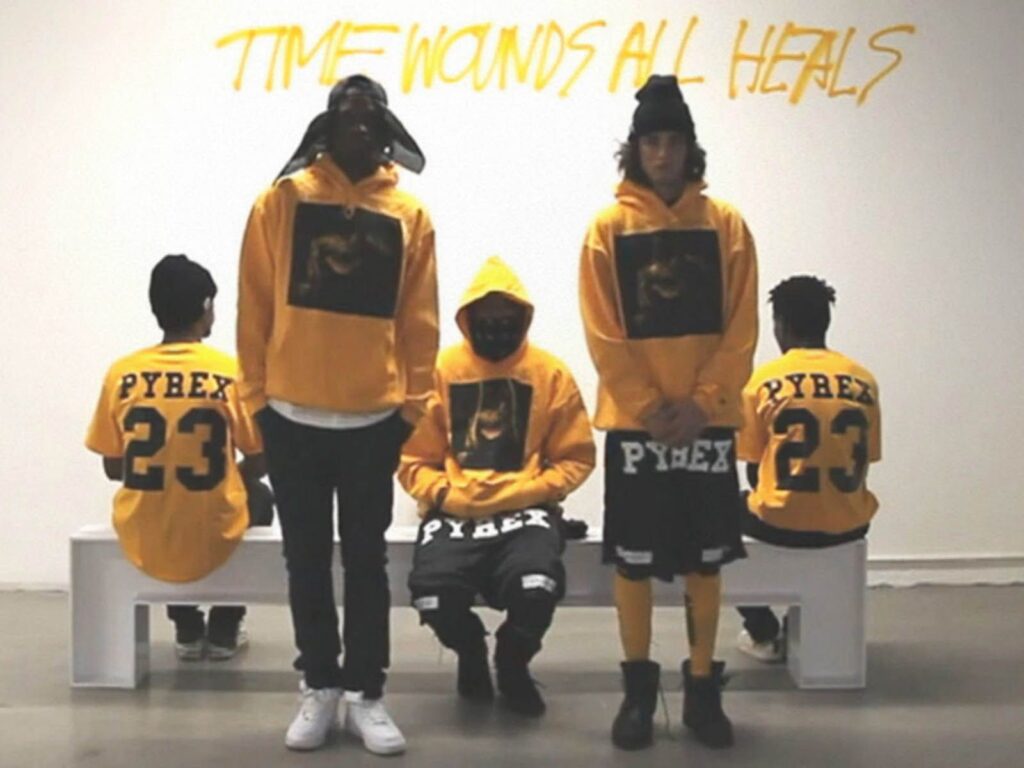
Louis Vuitton: A New Chapter in Luxury
Abloh’s appointment as the artistic director of Louis Vuitton’s menswear division in 2018 was a historic moment, marking the first time an African-American designer had held such a prestigious position at the French luxury house. This milestone was not only a personal achievement for Abloh but also a significant step towards greater diversity and representation within the fashion industry.
Abloh’s debut collection for Louis Vuitton was a masterclass in storytelling and inclusivity. Presented at the Palais Royal in Paris, the show featured a diverse cast of models walking down a rainbow-colored runway, symbolizing unity and hope. The collection itself was a fusion of Louis Vuitton’s rich heritage and Abloh’s contemporary sensibilities, featuring tailored suits, streetwear-inspired pieces, and accessories that blended luxury with utility.
Throughout his tenure at Louis Vuitton, Abloh continued to push the boundaries of luxury fashion. His collections often incorporated elements of streetwear, sportswear, and art, challenging traditional notions of what high fashion could be. Abloh’s use of innovative materials, such as holographic fabrics and transparent monograms, added a futuristic dimension to his designs, while his collaborations with artists and designers brought fresh perspectives to the brand.
Abloh’s work at Louis Vuitton was not limited to the runway. He also played a crucial role in the brand’s marketing and retail strategies, introducing immersive experiences and pop-up stores that blurred the lines between fashion and art. These initiatives not only enhanced the brand’s visibility but also created a deeper connection with its audience, further solidifying Abloh’s impact on the luxury fashion landscape.

The Polyphonic Designer: Multidisciplinary Ventures
Abloh’s creative genius was not confined to the realm of fashion. His multidisciplinary approach extended to various domains, including music, art, and industrial design. As a DJ and music producer, Abloh’s eclectic sets and innovative productions mirrored his approach to fashion, blending diverse genres and styles to create a unique auditory experience. His collaborations with musicians such as Kanye West, Kid Cudi, and Travis Scott were a testament to his influence in the music industry, where he contributed to album art, stage design, and merchandising.
In the art world, Abloh’s collaborations with contemporary artists such as Takashi Murakami and Jenny Holzer resulted in groundbreaking projects that explored themes of consumerism, identity, and cultural appropriation. These partnerships produced limited-edition pieces that seamlessly integrated fashion and art, challenging traditional boundaries and prompting viewers to reconsider their perceptions of both mediums.
Abloh’s foray into industrial design was marked by his collaboration with IKEA on the “MARKERAD” collection. This line of minimalist furniture and home accessories featured Off-White’s signature aesthetic, bringing high-concept design to a wider audience. Abloh’s ability to translate his fashion sensibilities into functional objects demonstrated his versatility as a designer and his commitment to making design accessible to all.
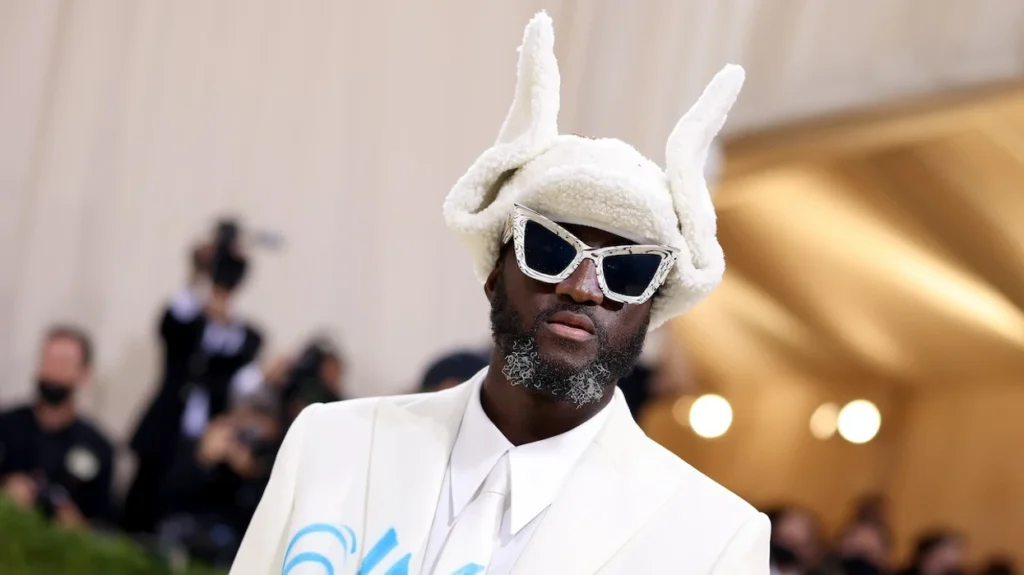
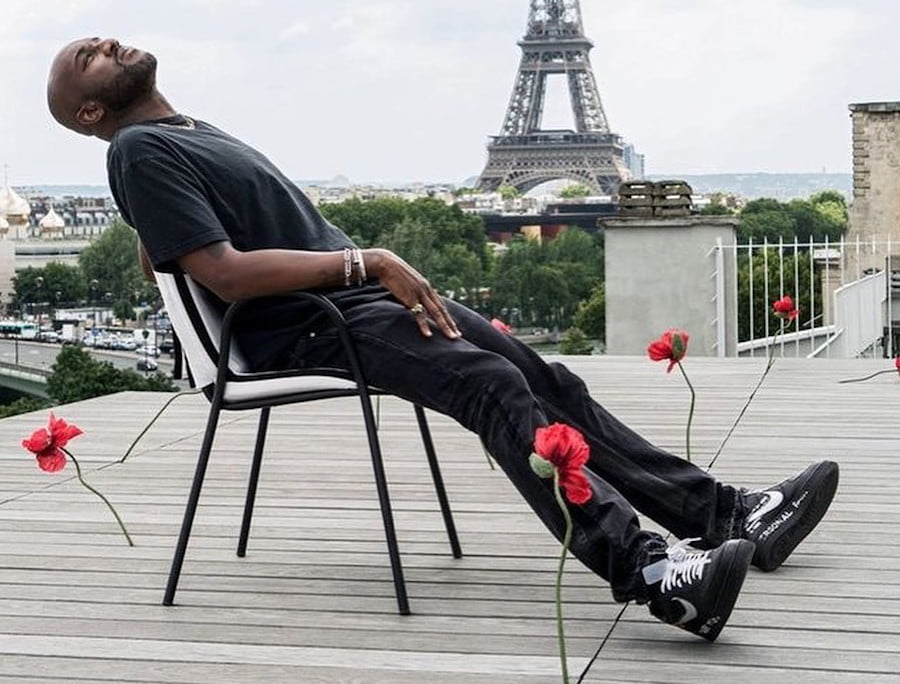
Philosophia of Fashion: Intellectual Underpinnings
Virgil Abloh’s work was deeply rooted in a philosophical exploration of fashion and its role in society. He viewed clothing as a medium for storytelling, a means of expressing identity and cultural narratives. Abloh’s designs were imbued with layers of meaning and intertextual references, inviting viewers to engage in a deeper dialogue with the garments.
One of Abloh’s most distinctive design elements was his use of quotation marks, which served as a form of meta-commentary. By placing everyday terms like “Sculpture” or “Shoelaces” in quotes, Abloh questioned the authenticity and authorship in fashion, prompting a reevaluation of their meanings and connotations. This semiotic playfulness was a hallmark of his approach, adding a layer of intellectual depth to his work.
Abloh’s fascination with deconstruction and recontextualization was heavily influenced by his architectural background. He approached fashion with the analytical rigor of an architect, dissecting garments to their core components and reconstructing them in novel ways. This method allowed him to explore the boundaries of form and function, creating pieces that were both aesthetically striking and intellectually engaging.
Abloh was also a vocal advocate for diversity and inclusion within the fashion industry. He used his platform to amplify marginalized voices and challenge the status quo, promoting a vision of fashion that was inherently inclusive. His commitment to these principles was evident in his casting choices, collaborative projects, and public statements, reflecting his belief that creativity should be a democratizing force.
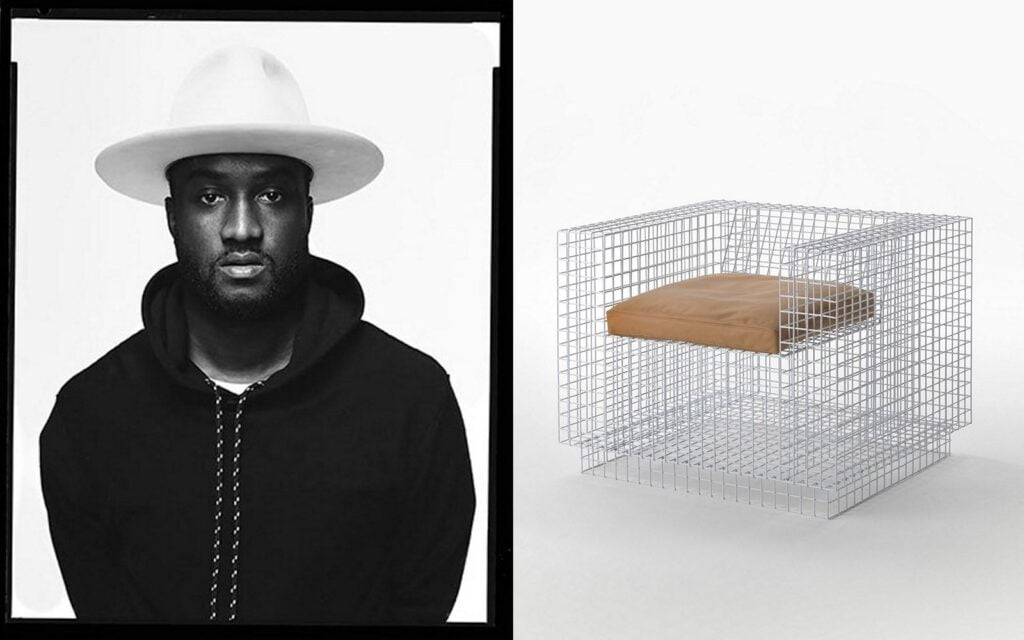
Epitaph of an Era: Reflections from the Fashion Pantheon
The fashion world was shaken by the news of Virgil Abloh’s untimely passing in November 2021. The outpouring of tributes from industry luminaries, artists, and fans alike was a testament to his profound impact on contemporary culture. Anna Wintour, the venerable editor-in-chief of Vogue, encapsulated the collective sentiment, describing Abloh as “a giant among men” whose vision and generosity transcended the confines of fashion.
“Virgil was not only a genius designer but a passionate advocate for diversity and inclusion,” Wintour remarked. “His work challenged the status quo and opened doors for a new generation of talent.”
Kim Jones, artistic director of Dior Men, reflected on Abloh’s boundary-defying ethos: “Virgil saw the world through a unique lens, blending high and low, luxury and street, in a way that no one else could. His legacy is a testament to the power of creativity and collaboration.”
Takashi Murakami, who collaborated with Abloh on numerous projects, lauded his interdisciplinary approach: “Virgil was a bridge between worlds—fashion, art, music. He saw connections where others saw divisions, and his work was a celebration of those intersections.”
Pharrell Williams, a close friend and collaborator, emphasized Abloh’s role as a cultural architect: “Virgil had an extraordinary ability to see beyond the surface, to tap into the essence of what makes us human. His work was a reflection of his boundless curiosity and his commitment to pushing the boundaries of what’s possible.”
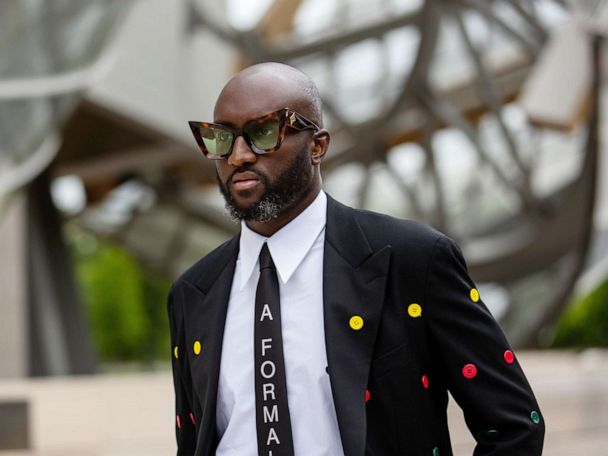
The Eternal Vanguard: Abloh’s Enduring Legacy
Virgil Abloh’s legacy is enshrined not merely in the annals of fashion history but in the cultural consciousness at large. His designs continue to inspire and provoke, serving as touchstones for future generations of creatives. Abloh’s vision of fashion as a democratic and inclusive medium remains a guiding light, a reminder that true innovation lies at the intersection of diverse perspectives.
In the grand tapestry of fashion, Abloh’s thread is woven with a brilliance that will never fade. His journey from the heartland of America to the ateliers of Paris was a testament to the power of vision, resilience, and boundless creativity. As the fashion world continues to evolve, the echoes of Abloh’s genius will reverberate, a perpetual reminder of the luminary who redefined the very fabric of contemporary fashion.
